
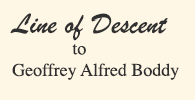
John Boddy
George Boddy
Alfred Boddy
Alfred Charles Boddy
Geoffrey Alfred Boddy
return to the
Boddy Family Tree
Alfred Boddy (1853-1913)
- Birth:
- 4 January, 1853, Southstoke, Somersetshire, UK
- Marriage:
- Sarah
Blackburn, 31 January 1876, Ramsgate, Kent
- Death:
- 24 January, 1913, Perkins Street, Newcastle (NSW)
- Father:
- George
Boddy
- Mother:
- Caroline
Nicholson
- Children:
- (Catherine Mary) "Katie" (1876-1958))
- Alfred Charles (1879-1968)
- (Lottie) May (1881-1966)
- (Mildred) Ethel (1883-1963)
- Arthur Sutton (1893-1980)
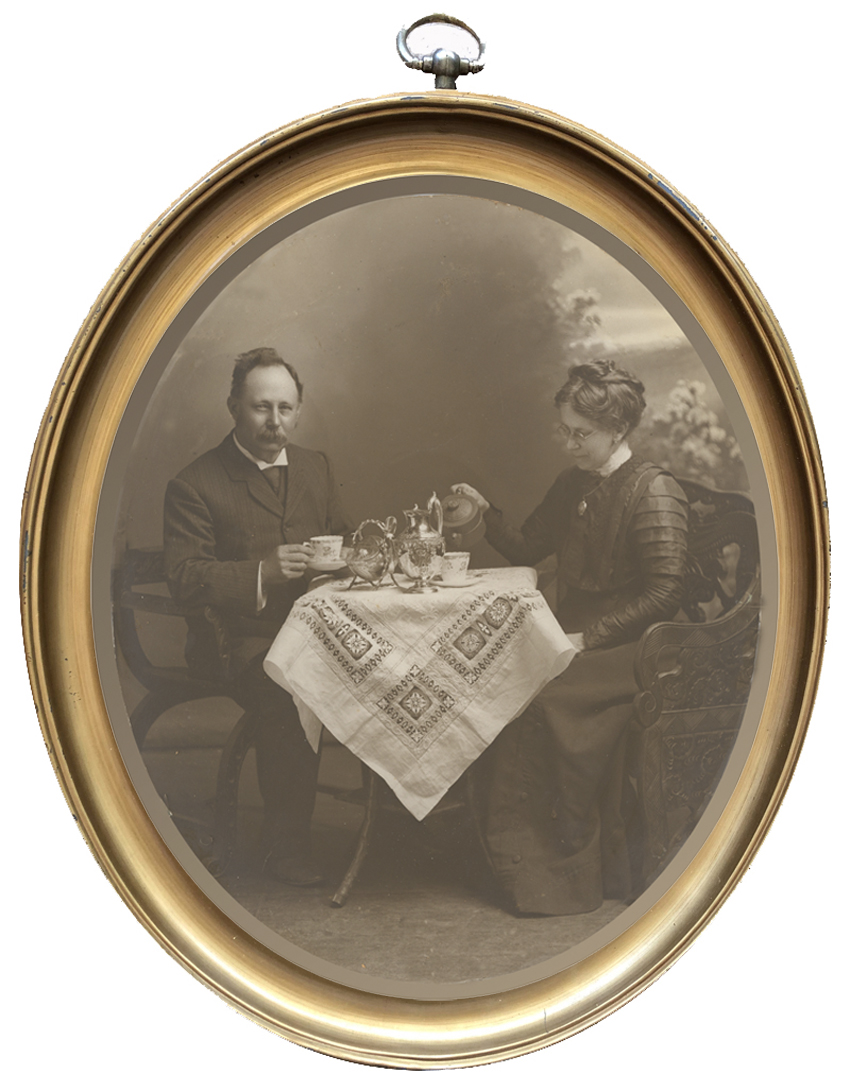
Alfred
and his wife Sarah at tea, probably around 1910.
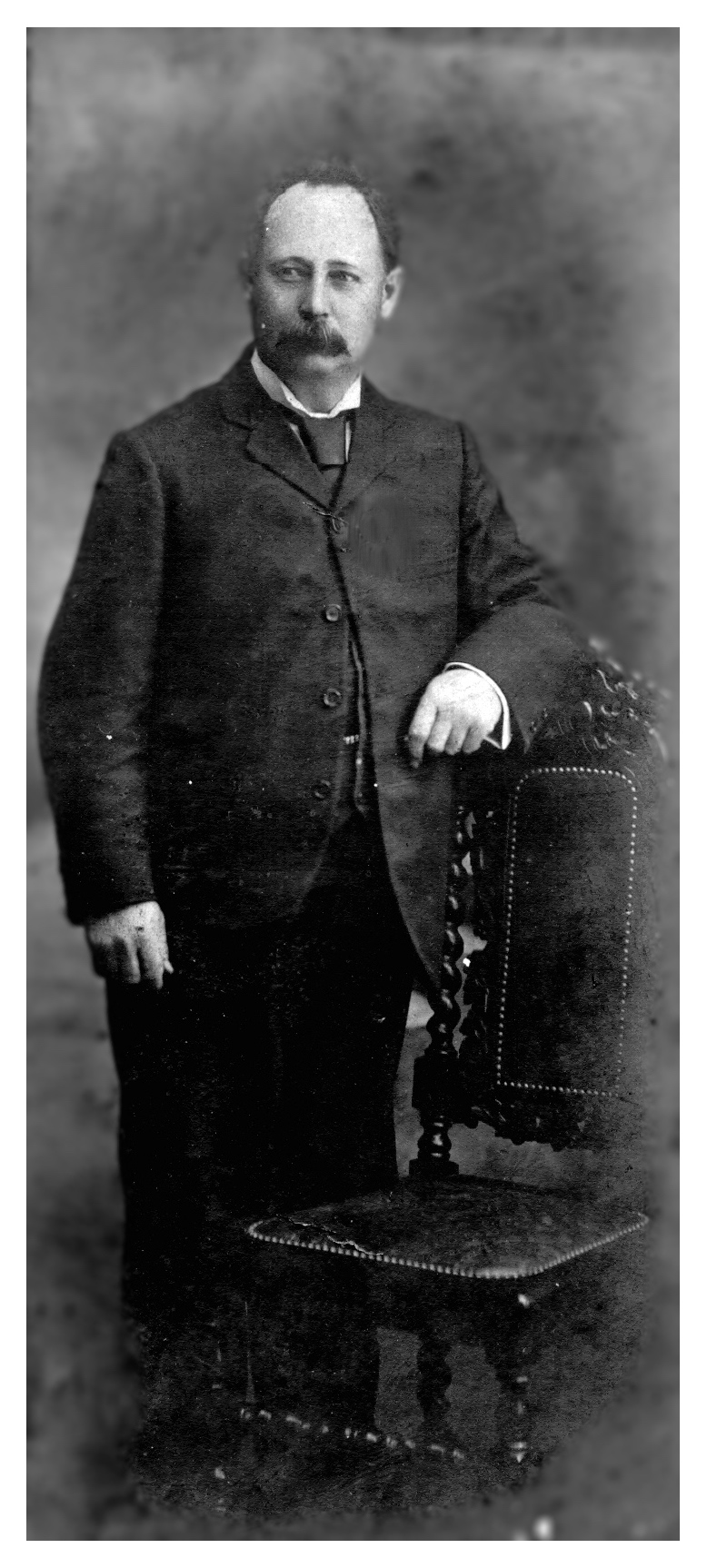
Alfred Boddy, early1900s
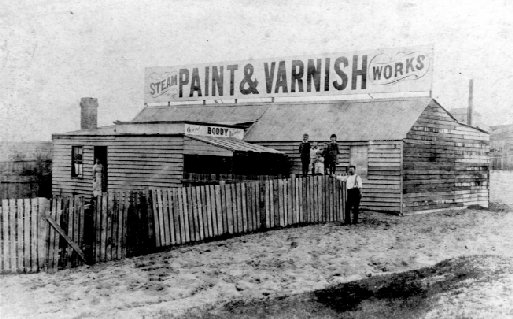
As the 19th century boomed along,
so did the fortunes of those European settlers who made the move south,
to the land Down Under. Among them was the Boddy family - first, in
1877, came Samuel, the 18-year-old son of English tax official George
Boddy. Samuel went on to became an upholsterer eventually settling at
Five Dock in Sydney, and then, just a couple of years later in the
1880s, Samuel's older brother Charles and his wife Eleanor made the
move. Charles and Eleanor went north, to the Newcastle area, where they
started one of the Hunter's early small factories, Charles Boddy's
Steam, Paint and Varnishing Works (left) at King Street, Violet
Town (later known as Tingira Heights), south of Newcastle city.
This was probably similar to the work the family was familiar with in London. Although George had moved the family around in the 1850s-1870s through his work as a tax inspector, by the late 1870s, another son, Alfred and his family were settled in the London suburb of Woolwich, operating a hardware shop. Alfred, the third of George's sons, was described in the 1881 UK Census as an"oilman" living next door to the hardware shop he operated.
This was probably similar to the work the family was familiar with in London. Although George had moved the family around in the 1850s-1870s through his work as a tax inspector, by the late 1870s, another son, Alfred and his family were settled in the London suburb of Woolwich, operating a hardware shop. Alfred, the third of George's sons, was described in the 1881 UK Census as an"oilman" living next door to the hardware shop he operated.
The reports back to
Charles' family in London must have been positive - by 1888, Alfred, his
wife Sarah and four children had decided to join Charles and Samuel,
packed up their belongings, and along with Alfred's newly-widowed father
George, headed for New South Wales.
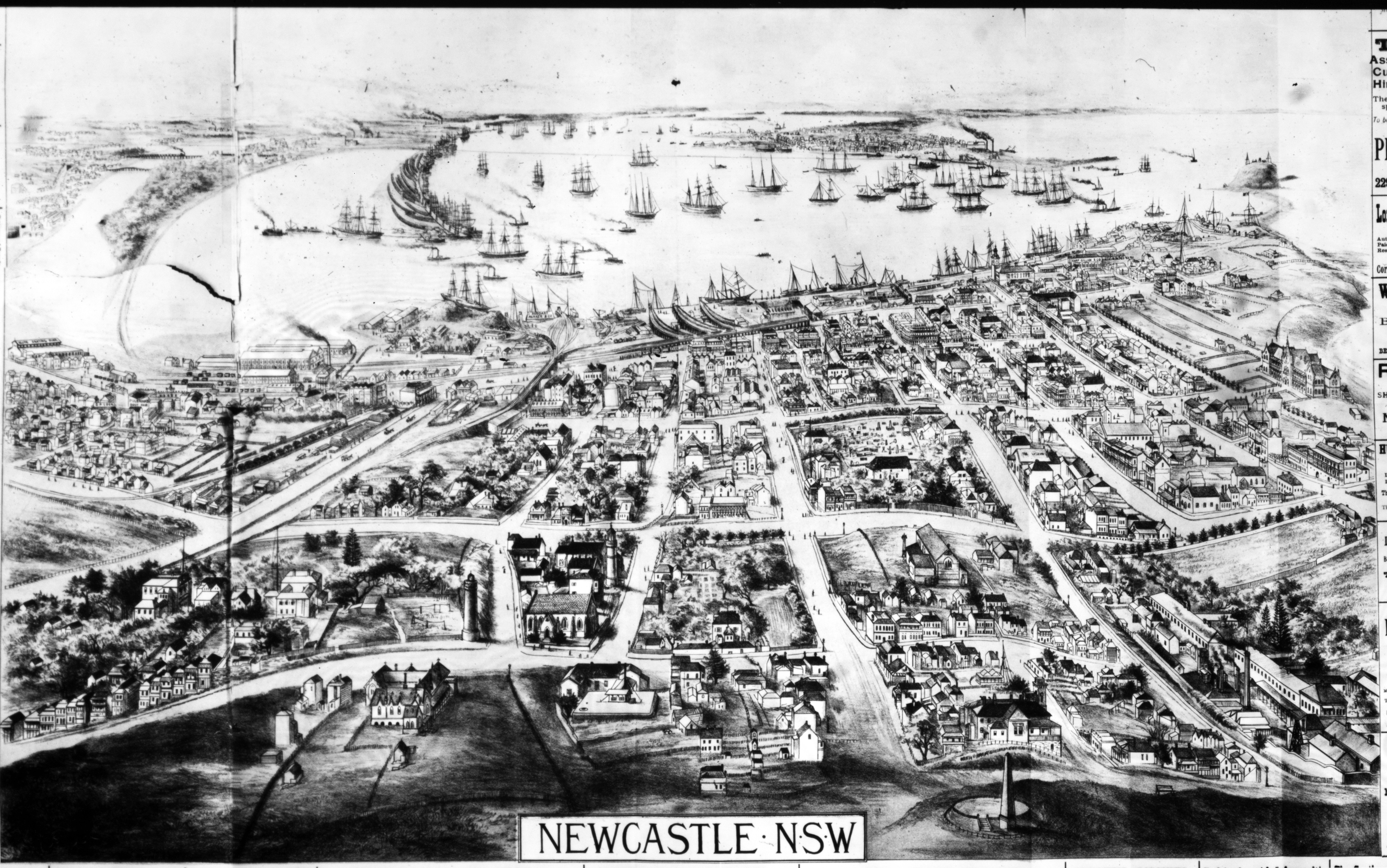
Above: A drawing of how
Newcastle was at the time the Boddy family arrived - from the
Illustrated Sydney News, 27 June, 1889
below: a photograph of Newcastle in 1888, by early Newcastle photographer, Ralph Snowball.
below: a photograph of Newcastle in 1888, by early Newcastle photographer, Ralph Snowball.
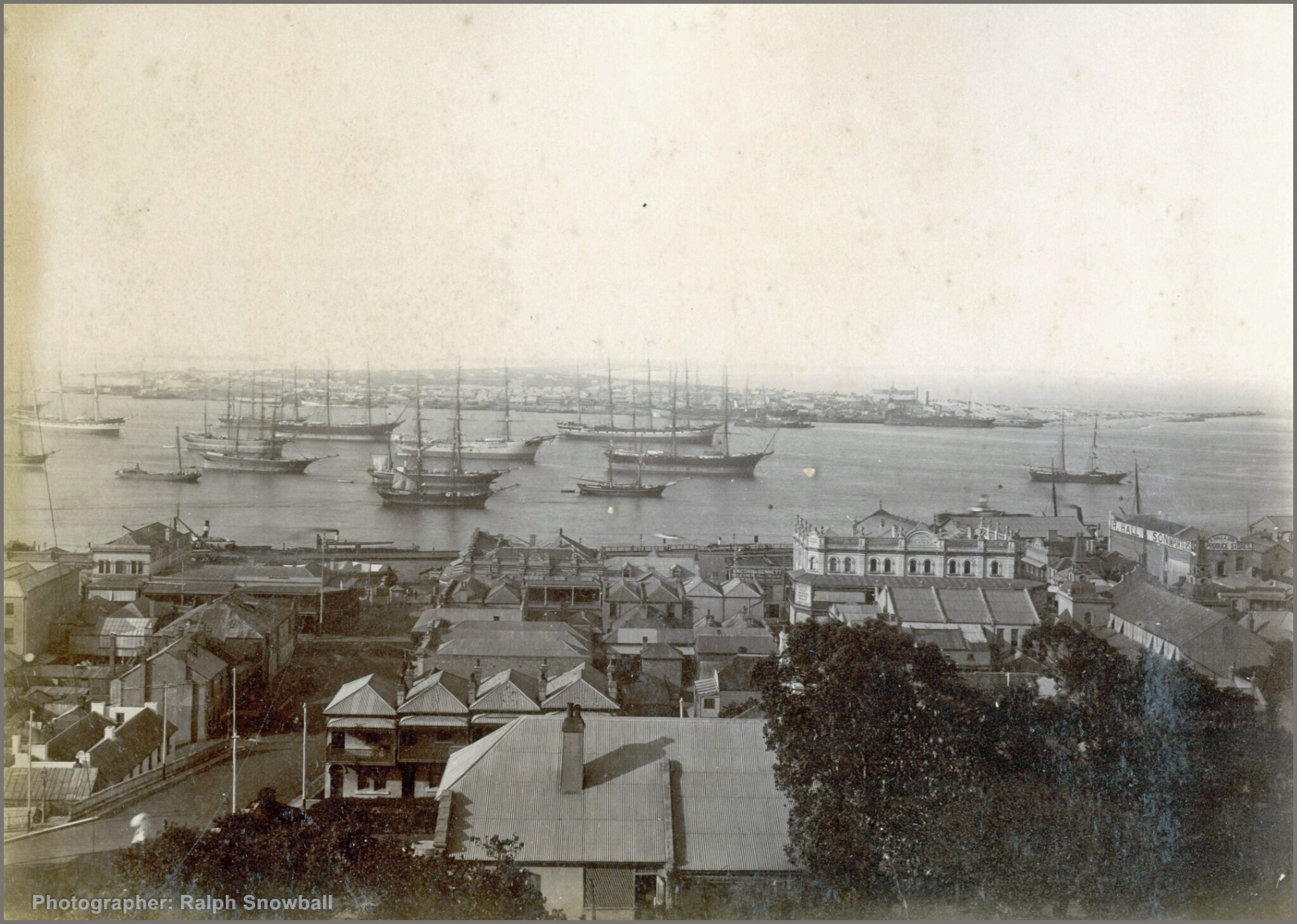
Once in Newcastle, they
settled first in a cottage at the Glebe (an area later known as The
Junction, where two railway lines met) and this was followed by periods
in suburbs such as Waratah North (later part of Mayfield) where the
family was living in York Street when Alfred and Sarah's youngest son,
Arthur was born in 1893. Alfred set up as a shopkeeper in Lambton Road,
Adamstown - and this was the business which came crashing down when the
Depression of the 1890s swept across the land.
The impact was devastating::
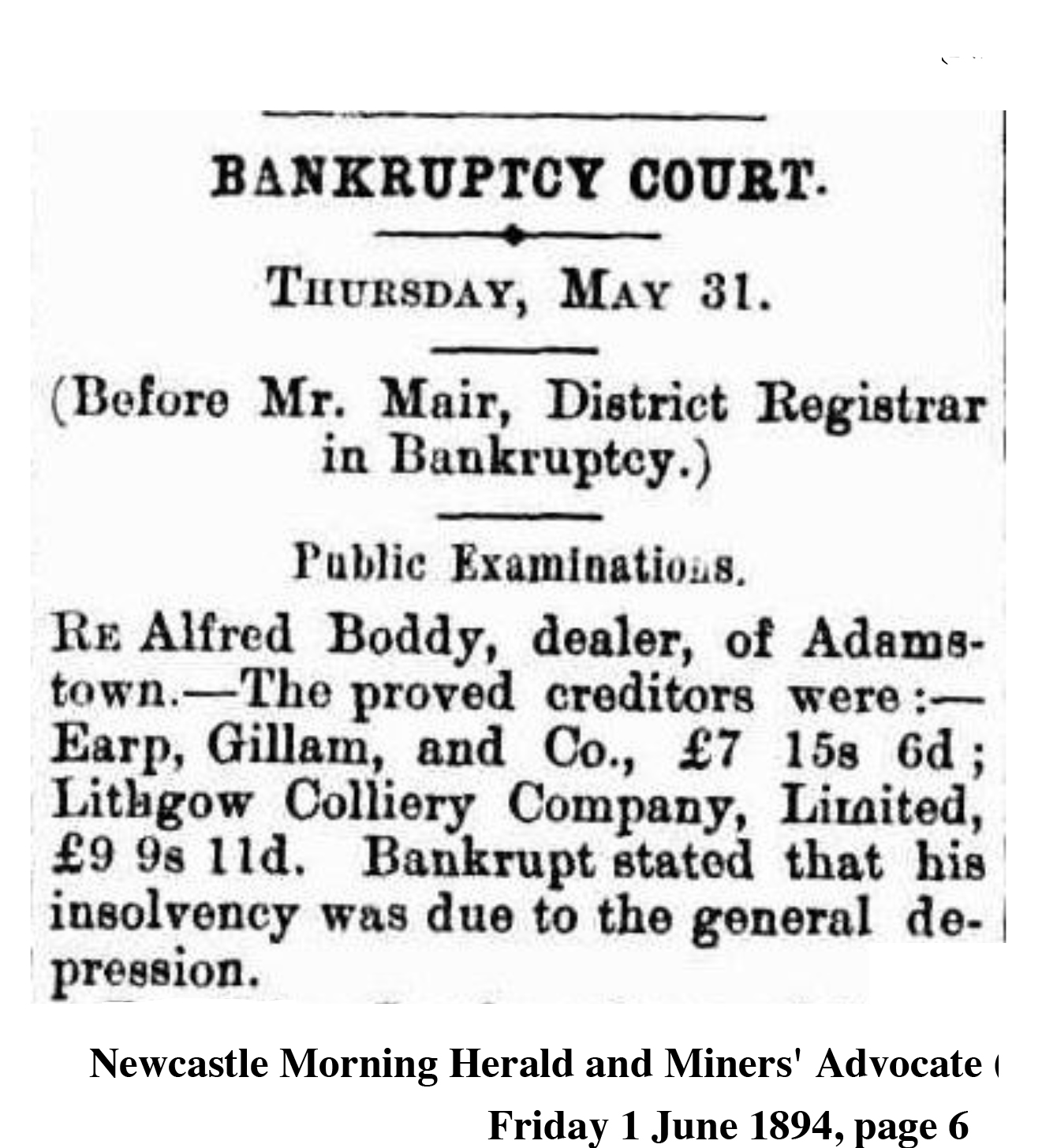 In
1894, Alfred declared his bankruptcy, with the court proceedings
outlining debts of less than £20.
In
1894, Alfred declared his bankruptcy, with the court proceedings
outlining debts of less than £20.
In heartbreaking testimony, Alfred told the court how the economic collapse had devastated his family.
Alfred and Sarah picked themselves up after this setback, rented a house at Smedmore (now the inner Newcastle suburb of Wickham-Maryville), somehow acquired a camera and a buggy, and set out earning a living as itinerant photographers.
Alfred and family appear to have recovered fairly quickly from their economic woes - early in 1897, in the local paper, The Newcastle Morning Herald and Miners' Advocate, the family advertised for a "Useful GIRL", at their then home, Dartford, in Beaumont Street, Hamilton. (The name Dartford was also used on a later, much bigger, house built by the family off Wolfe Street).
The impact was devastating::
During
the 1890s, Australia was hit hard by an economic depression that left
its banking system in ruins. ... Within three years the recession was
global and had caused the total collapse of Australia's economy.
Widespread unemployment set in, and many Australians faced
homelessness and hunger.1
 In
1894, Alfred declared his bankruptcy, with the court proceedings
outlining debts of less than £20.
In
1894, Alfred declared his bankruptcy, with the court proceedings
outlining debts of less than £20. In heartbreaking testimony, Alfred told the court how the economic collapse had devastated his family.
I
have only earned for the past twelve months twenty pounds, out of
which I had to support a wife and five children. On many occasions
during the last twelve months, myself, wife and family have had to
exist on bread and water… I am compelled to sequestrate my estate,
otherwise my creditors will never be done harassing me.
Alfred and Sarah picked themselves up after this setback, rented a house at Smedmore (now the inner Newcastle suburb of Wickham-Maryville), somehow acquired a camera and a buggy, and set out earning a living as itinerant photographers.
Alfred and family appear to have recovered fairly quickly from their economic woes - early in 1897, in the local paper, The Newcastle Morning Herald and Miners' Advocate, the family advertised for a "Useful GIRL", at their then home, Dartford, in Beaumont Street, Hamilton. (The name Dartford was also used on a later, much bigger, house built by the family off Wolfe Street).
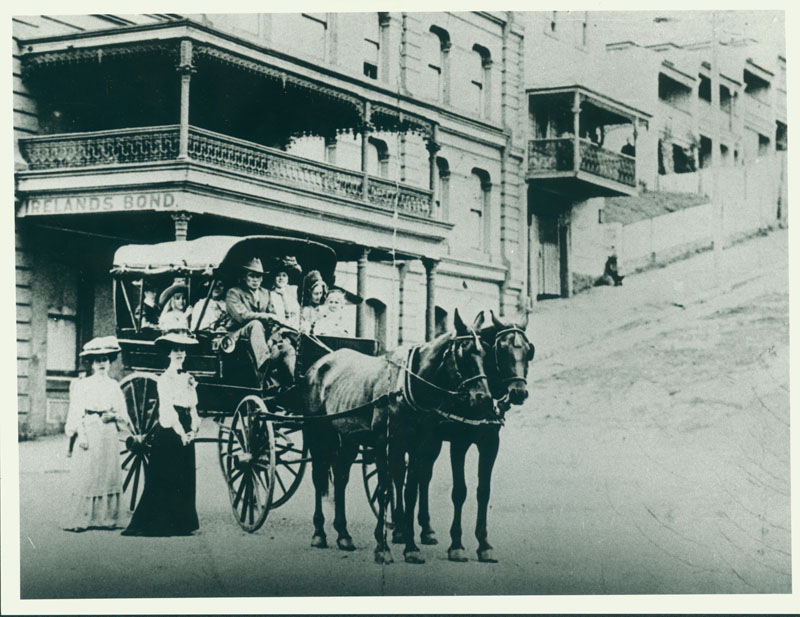 The
photography business, with studios at Wolfe & Hunter Streets, was
one of the early studios in Newcastle. Alfred and Sarah travelled by
buggy for clients throughout the Hunter Valley and as far away as
Taree. Alfred also travelled out on the pilot boat to photograph vessels
waiting to enter the port of Newcastle.
The
photography business, with studios at Wolfe & Hunter Streets, was
one of the early studios in Newcastle. Alfred and Sarah travelled by
buggy for clients throughout the Hunter Valley and as far away as
Taree. Alfred also travelled out on the pilot boat to photograph vessels
waiting to enter the port of Newcastle.As they became more established, the family moved to 25½ Perkins street, in the Newcastle CBD and conducted their studio (known as Imperial Studios) there for many years under the name of S.A Boddy (presumably Sarah and Alfred - neither Sarah nor Alfred had been given a second name at birth).
left: The corner of King and Perkins street, in Newcastle in the early 1900s. The Boddy family home and studio was at 25½ (now 27 Perkins street - the building just up from the corner with a small balcony overhanging the footpath. The identity of the people in the carriage is unknown.
(Photo from the Hunter History Collection, courtesy Newcastle Region Library)
When Alfred died in 1913 after suffering from the kidney disease, nephritis, for six months, the business was taken over by his daughters (Lottie) May and (Mildred) Ethel and the business became known as May & E. Boddy Photographers.
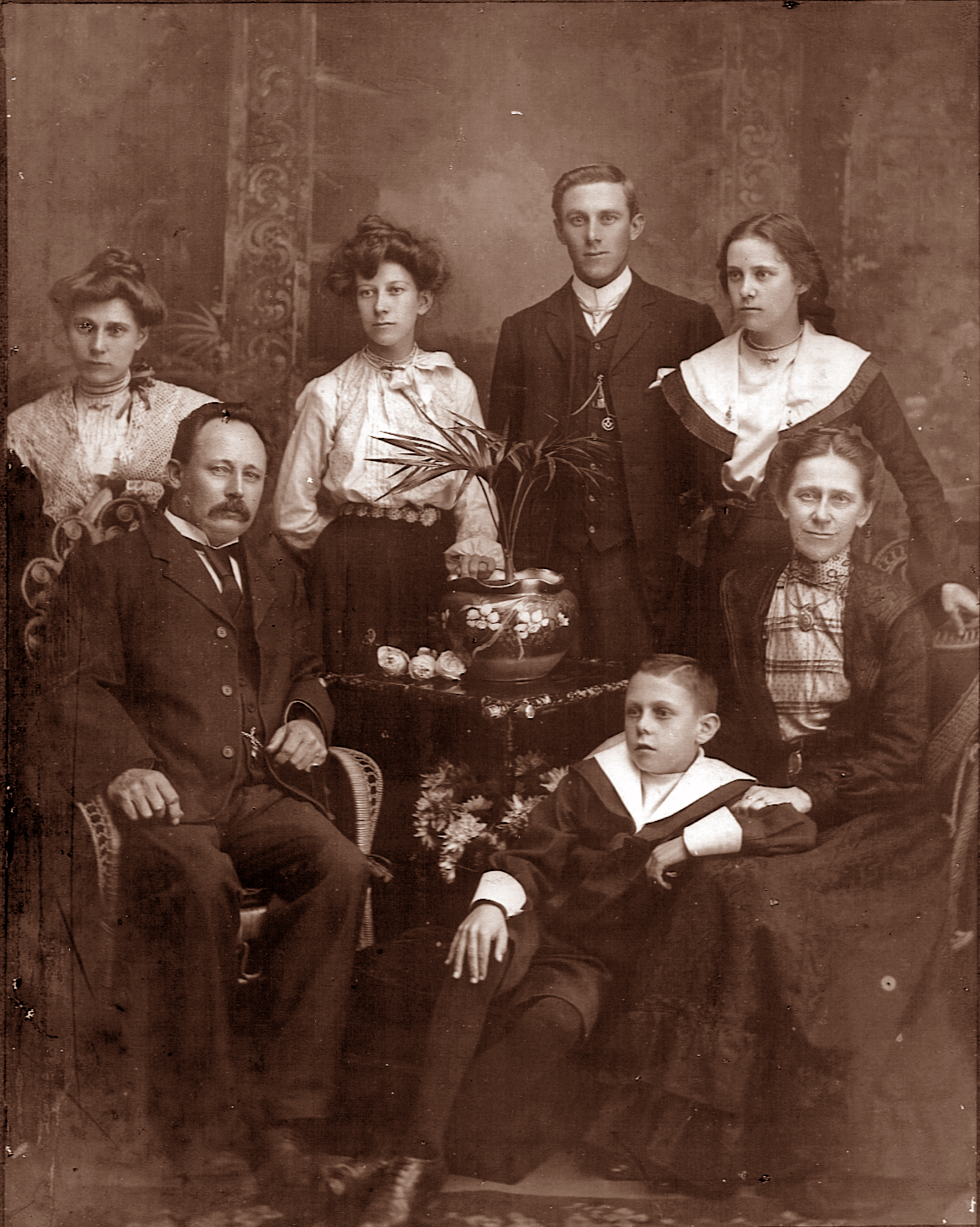
The family of Alfred & Sarah Boddy,
c1903
Standing (L to R): Catherine, May, Alfred Charles, and Ethel Boddy
Sitting: Alfred & Sarah Boddy with their youngest, Arthur Sutton Boddy sitting between them.
Standing (L to R): Catherine, May, Alfred Charles, and Ethel Boddy
Sitting: Alfred & Sarah Boddy with their youngest, Arthur Sutton Boddy sitting between them.
Back
to the Boddy
Family tree